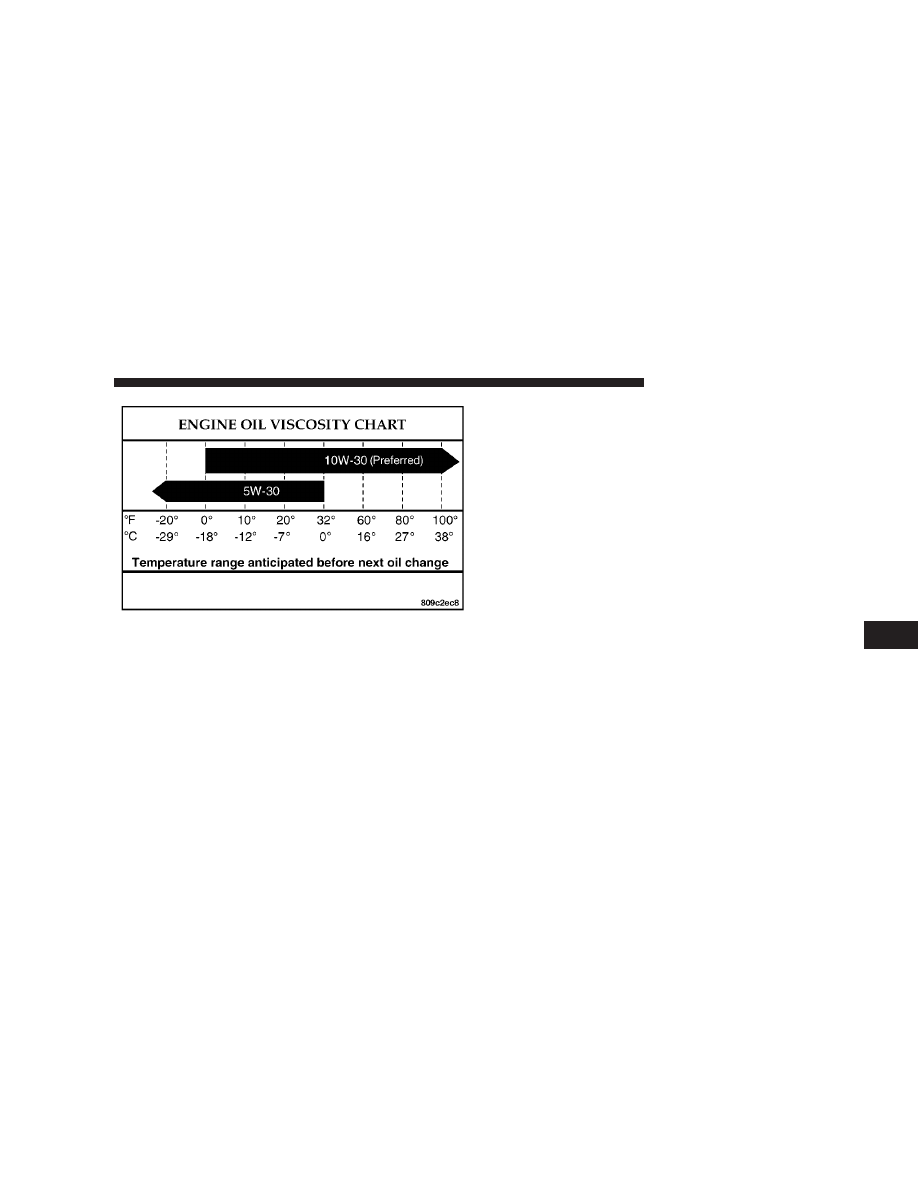Dodge Intrepid (2004 year). Manual - part 12

The proper SAE viscosity grade of engine oil should be
selected based on the following recommendations and be
within the operating temperature shown in the engine oil
viscosity charts.
SAE 10W-30 oil is preferred for use in 3.5L engines within
the operating temperatures shown in the viscosity chart.
SAE 5W-30 engine oil is allowed for use in the 3.5L
engine during cold weather only to improve cold
weather starting.
SAE 5W-30 oil is preferred for use in 2.7L engines within
the operating temperatures shown in the viscosity chart.
You are encouraged to use SAE 5W-30 oils to aid in low
temperature starting and for improved fuel economy.
Synthetic Engine Oils
There are a growing number of engine oils being pro-
moted as either synthetic or semi-synthetic. If you choose
to use such a product, use only those oils that meet the
American Petroleum Institute (API) and SAE viscosity
standard. Follow the service schedule that describes your
driving type.
Materials Added To Engine Oils
The manufacturer strongly recommends against the ad-
dition of any additives (other than leak detection dyes) to
engine oil. Engine oil is an engineered product and it’s
performance may be impaired by supplemental addi-
tives.
Disposing of Used Engine Oil
Care should be taken in disposing of used engine oil from
your vehicle. Used oil, indiscriminately discarded, can
present a problem to the environment. Contact your
dealer, service station, or governmental agency for advice
3.5L Engine Oil Chart
MAINTAINING YOUR VEHICLE
177
7